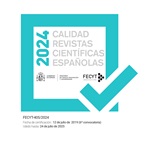La Unión Europea y el trabajo forzoso: análisis del Reglamento (UE) 2024/3015 que prohíbe productos realizados con trabajo forzoso. (RI §428398)

The European Union and forced labour: analysis of Regulation (EU) 2024/3015 prohibiting products made with forced labour -
Annina Cristina Burgin
La Unión Europea aprobó un nuevo instrumento con el objetivo de conseguir la eliminación de una grave violación de un derecho humano, la que es el trabajo forzoso. La UE y sus Estados miembros ratificaron los Convenios Fundamentales de la Organización Internacional del Trabajo (OIT), entre los que figuran el Convenio sobre el trabajo forzoso, 1930 (núm. 29) y el Convenio sobre la abolición del trabajo forzoso, 1957 (núm. 105). A pesar de la prohibición del trabajo forzoso en la UE, era posible que entraran -o salieran- productos realizados con trabajo forzoso en el mercado comunitario. Con el objetivo de romper cadenas de valor contaminadas con trabajo forzoso, la UE adoptó una nueva medida comercial mediante el Reglamento (UE) 2024/3015 prohibiendo en el mercado comunitario los productos realizados con trabajo forzoso. La nueva normativa se aplica a cualquier producto -independientemente del lugar de su producción-, a todas las empresas y fases de la producción. Este artículo analiza el futuro mecanismo de control, las investigaciones y la aplicación de la normativa, y ofrece una exploración de las importantes modificaciones que han introducido los colegisladores desde la propuesta de la Comisión, como son la carga de la prueba o el reparto de competencias entre las autoridades en cuanto a investigaciones. El Reglamento es una medida comercial cuyo objetivo es garantizar un derecho humano fundamental, por lo que puede considerarse un instrumento adicional para promover los valores fundamentales de la UE. Sin embargo, al tratarse de una medida que restringe el comercio internacional, debe ajustarse al marco regulatorio de la Organización Mundial del Comercio (OMC), y es por ello por lo que el artículo analiza detalladamente el marco jurídico internacional en el que se adoptó el Reglamento, con referencia tanto a la OIT como a la OMC.
I. INTRODUCTION: THE FIGHT AGAINST FORCED LABOUR AND TRADE MEASURES; II. CONTENT ANALYSIS OF REGULATION (EU) 2024/3015 2.1. The long road to the Regulation (EU) 2024/3015; 2.2. Structure; 2.3. Subject matter, scope and definitions 2.4. The control and sanction procedures; 2.5. Principles highlighted related to the investigations; 2.6. Highlighted changes introduced in Regulation (EU) 2024/3015; III. THE EUROPEAN AND INTERNATIONAL LEGAL CONTEXT 3.1. The prohibition of forced labour in the international framework: the work of the ILO; 3.2. The European Union's common trade policy and the protection of human rights; 3.3 The international trade regulatory framework established by the WTO; IV. CONCLUDING REMARKS.
The European Union adopted a new instrument with the aim of achieving the elimination of a serious violation of a human right, namely forced labour. The EU and its Member States ratified the Fundamental Conventions of the International Labour Organisation (ILO), including the Forced Labour Convention, 1930 (No. 29) and the Abolition of Forced Labour Convention, 1957 (No. 105). Forced labour is prohibited in the EU, however, it has been possible for products made with forced labour to enter -or leave- the EU market. With the aim of cleaning value chains contaminated with forced labour, the EU adopted with Regulation (EU) 2024/3015 a new trade measure banning products made with forced labour from the EU market. The new regulation applies to any product -regardless of where it is produced-, to all companies and stages of production. This contribution analyses the future control mechanism, investigation procedures and the enforcement, and provides a discussion of the important changes introduced by the co-legislators since the Commission's proposal, such as the burden of proof or the division of competences between authorities during investigations. The Regulation is a trade measure aimed at guaranteeing a fundamental human right and can therefore be seen as an additional instrument to promote the EU's core values. However, as a measure restricting international trade, it must comply with the regulatory framework of the World Trade Organisation (WTO), which is why the article analyses in detail the international legal framework in which the Regulation was adopted, with reference to both the ILO and the WTO.
I. INTRODUCTION: THE FIGHT AGAINST FORCED LABOUR AND TRADE MEASURES; II. CONTENT ANALYSIS OF REGULATION (EU) 2024/3015 2.1. The long road to the Regulation (EU) 2024/3015; 2.2. Structure; 2.3. Subject matter, scope and definitions 2.4. The control and sanction procedures; 2.5. Principles highlighted related to the investigations; 2.6. Highlighted changes introduced in Regulation (EU) 2024/3015; III. THE EUROPEAN AND INTERNATIONAL LEGAL CONTEXT 3.1. The prohibition of forced labour in the international framework: the work of the ILO; 3.2. The European Union's common trade policy and the protection of human rights; 3.3 The international trade regulatory framework established by the WTO; IV. CONCLUDING REMARKS.

 DIRECCIÓN / MANAGEMENT
DIRECCIÓN / MANAGEMENT